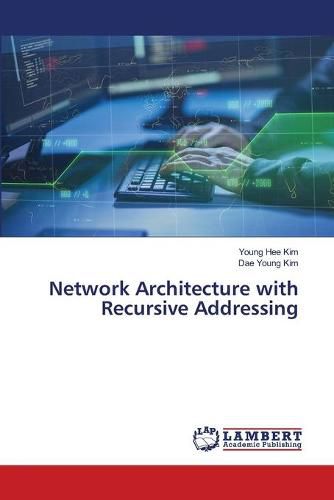Readings Newsletter
Become a Readings Member to make your shopping experience even easier.
Sign in or sign up for free!
You’re not far away from qualifying for FREE standard shipping within Australia
You’ve qualified for FREE standard shipping within Australia
The cart is loading…






This title is printed to order. This book may have been self-published. If so, we cannot guarantee the quality of the content. In the main most books will have gone through the editing process however some may not. We therefore suggest that you be aware of this before ordering this book. If in doubt check either the author or publisher’s details as we are unable to accept any returns unless they are faulty. Please contact us if you have any questions.
A network architecture, named NARA, based on recursive addressing is proposed. The Internet is modeled as a network of autonomous sites, each being a collection of nodes. Each site is named by a site address drawn from a global number space while each node is named by a node address drawn from a number space local to each site. Routing among sites depends solely on site addresses while that among nodes within each site on node addresses. Flat routing to render inherent mobility and cached routing as well as virtual routing to additionally cope with the table size are proposed. The model can recursively repeat itself both outwards and inwards in the network, enabling its applicability, for example, to inter-planetary as well as body area networks. The generic architecture NARA is then projected on IPv6 as an implementation example. Instead of introducing a new number space to unload the equivocal semantics of the IP address, the specific implementation, called SID6 (Subnet ID Deprecated for IPv6), removes the interface semantics of the Global Unicast IPv6 address which is then to exclusively identify a node and so is to be used solely as the node address.
$9.00 standard shipping within Australia
FREE standard shipping within Australia for orders over $100.00
Express & International shipping calculated at checkout
This title is printed to order. This book may have been self-published. If so, we cannot guarantee the quality of the content. In the main most books will have gone through the editing process however some may not. We therefore suggest that you be aware of this before ordering this book. If in doubt check either the author or publisher’s details as we are unable to accept any returns unless they are faulty. Please contact us if you have any questions.
A network architecture, named NARA, based on recursive addressing is proposed. The Internet is modeled as a network of autonomous sites, each being a collection of nodes. Each site is named by a site address drawn from a global number space while each node is named by a node address drawn from a number space local to each site. Routing among sites depends solely on site addresses while that among nodes within each site on node addresses. Flat routing to render inherent mobility and cached routing as well as virtual routing to additionally cope with the table size are proposed. The model can recursively repeat itself both outwards and inwards in the network, enabling its applicability, for example, to inter-planetary as well as body area networks. The generic architecture NARA is then projected on IPv6 as an implementation example. Instead of introducing a new number space to unload the equivocal semantics of the IP address, the specific implementation, called SID6 (Subnet ID Deprecated for IPv6), removes the interface semantics of the Global Unicast IPv6 address which is then to exclusively identify a node and so is to be used solely as the node address.